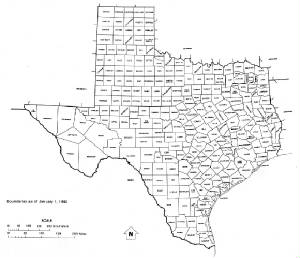|
Texas is large, very large compared to the other states that made up the Confederacy.
From El Paso in the west to Nacogdoches in the east it is about 820 miles. North to south is approximately 870 miles. Much
of this land was unpopulated in the 19th century.

Texas’ population almost tripled between 1850 and 1860. On the eve of the Civil War, Texas had a total population of 604,2151 placing it as the ninth most populous state in the Confederacy ahead of Arkansas and Florida. Some of the new Texans,
about 7%, came from other countries such as Germany, Bohemia, Poland, Norway and Sweden. Others came from northern states;
however, the majority of those “gone to Texas” came from other southern slave holding states.
Texas’ was also ninth in ranking for the number of slaves (182,566) and slaveholders (21,878). Twenty-five percent of the Texas population owned slaves, about the same proportion
as Virginia. Based on the 1860 census, only 6% of Texas slaves belonged to non-farmers. 60% belonged to slaveholders who owned
10 or more slaves, about ¼ of the slaveholding population. The highest proportion of slaveholders was in eastern Texas.2

|
| Pioneer Farms, Austin, TX |
At the beginning of the War, Texas was still very rural. The majority of Texans
lived in small villages or farming communities on small subsistence farms producing crops such as corn, sweet potatoes, Irish
potatoes, peas, beans, okra, squash, and cabbage. Three-quarters of the free population were involved one way or another in
farming.3 Cotton was the most important commercial crop in Texas, which ranked fifth in the top ten cotton producing states in
1859; however, corn was cultivated more widely than any other crop in Texas. A smaller number of farms produced sugar and
wheat. Cattle and hogs were also raised on Texas farms usually for home consumption.
|

